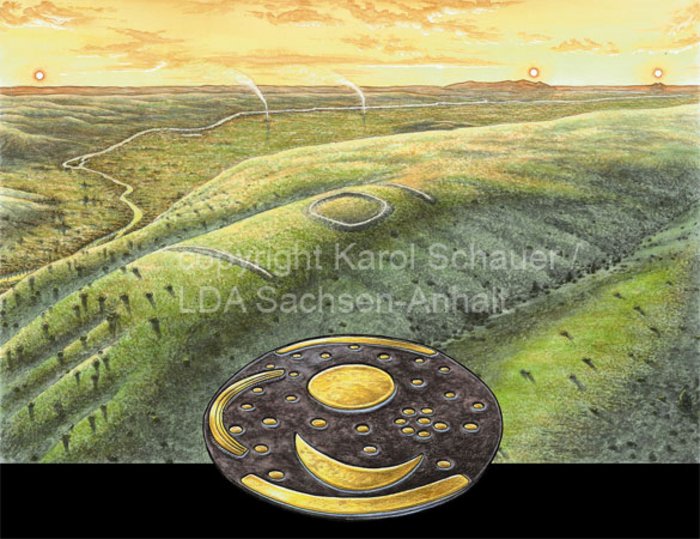The Place of Discovery
The Sky Disc was discovered on the Mittelberg hill near Nebra – in a region that has offered humans optimal living conditions for 500,000 years.
Extensive excavations have shown that the entire hill spur was probably already delimited by two straight ramparts at the time the Sky Disc was concealed. A low circular rampart about 160 m in diameter, with an external ditch, surrounded the place where the Sky Disc was found. However, according to the sparse finds, this earthen wall and ditch construction is about 1,000 years younger than the bronze hoard.
Since no traces of settlement from the Bronze Age could be found on the hill, it can be assumed that the treasure was deposited in an enclosed sacred precinct.
When a smith applied the golden horizon arcs onto the Sky Disc, he not only marked the solstice points but also landmarks visible from the Mittelberg: when he aligned the Sky Disc on the plateau to the north, the upper terminus of the western horizon arc pointed towards the Brocken, the highest mountain of the Harz massif. This is precisely where the sun disappears on June 21st, the summer solstice.
Another distinctive elevation on the horizon are the Kyffhäuser mountains with the Kulpenberg hill, where the sun is swallowed by the mountain on May 1st. Although this date is not encoded on the Sky Disc, it is known by other cultures as the Beltane or Spring Festival. Gaps in the palisades of the Goseck solar observatory also mark this date.
Here you can find the films from the »Museum exklusiv« series of the State Museum of Prehistory »Die Himmelsscheibe von Nebra: Bestätigung des Fundortes« and »Die Himmelsscheibe von Nebra: Fundort Mittelberg« (German version only).
